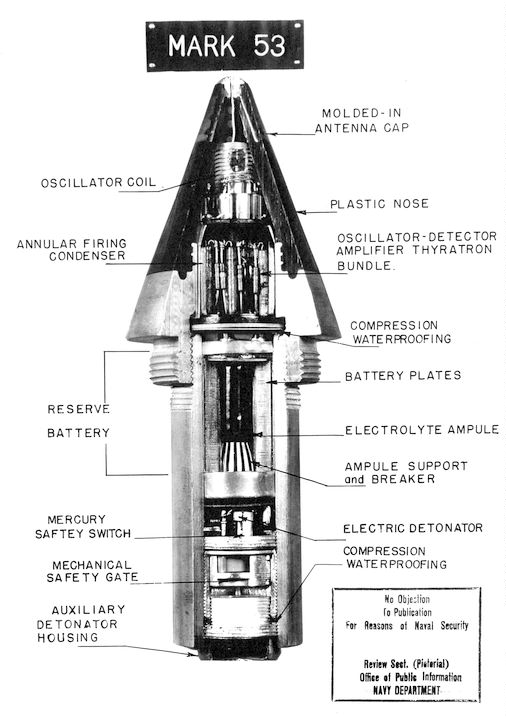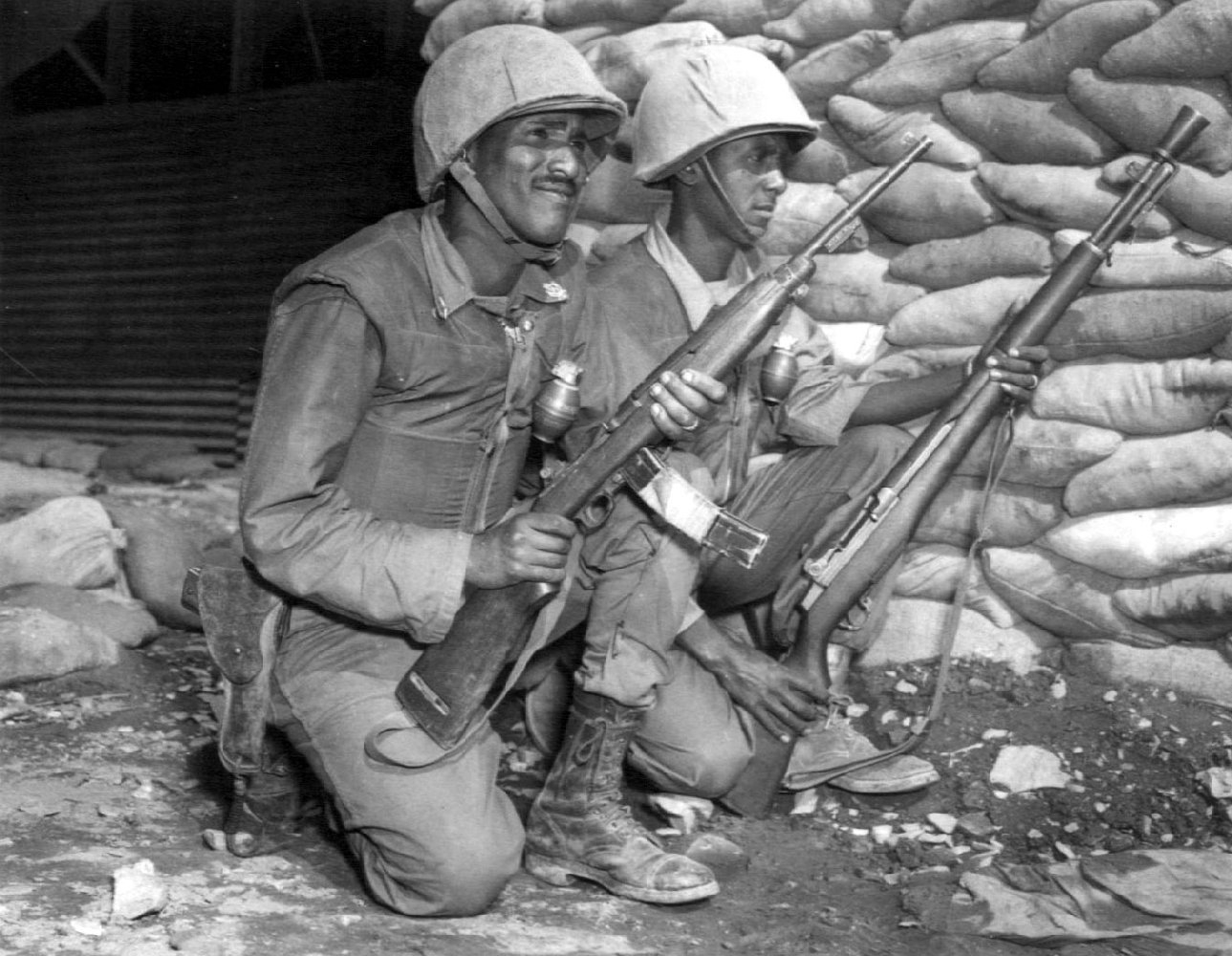|
Composition B
Composition B, colloquially Comp B, is an explosive consisting of castable mixtures of RDX and TNT. It is used as the main explosive filling in artillery projectiles, rockets, land mines, hand grenades and various other munitions. It was also used for the explosive lenses in the first implosion-type nuclear weapons developed by the United States.''Atom Bombs: The Top Secret Inside Story of Little Boy and Fat Man'', John Coster-Mullen, 2003Nuclear Weapons FAQ section 8.1.1: The Design of Gadget, Fat Man, and "Joe 1" (RDS-1) accessed August 10, 2009 The standard proportions of ingredients (by weight) are 59.5% RDX ( |
World War II
World War II or the Second World War, often abbreviated as WWII or WW2, was a world war that lasted from 1939 to 1945. It involved the vast majority of the world's countries—including all of the great powers—forming two opposing military alliances: the Allies and the Axis powers. World War II was a total war that directly involved more than 100 million personnel from more than 30 countries. The major participants in the war threw their entire economic, industrial, and scientific capabilities behind the war effort, blurring the distinction between civilian and military resources. Aircraft played a major role in the conflict, enabling the strategic bombing of population centres and deploying the only two nuclear weapons ever used in war. World War II was by far the deadliest conflict in human history; it resulted in 70 to 85 million fatalities, mostly among civilians. Tens of millions died due to genocides (including the Holocaust), starvation, ma ... [...More Info...] [...Related Items...] OR: [Wikipedia] [Google] [Baidu] |
RE Factor
TNT equivalent is a convention for expressing energy, typically used to describe the energy released in an explosion. The is a unit of energy defined by that convention to be , which is the approximate energy released in the detonation of a metric ton (1,000 kilograms) of TNT. In other words, for each gram of TNT exploded, (or 4184 joules) of energy is released. This convention intends to compare the destructiveness of an event with that of conventional explosive materials, of which TNT is a typical example, although other conventional explosives such as dynamite contain more energy. Kiloton and megaton The "kiloton (of TNT)" is a unit of energy equal to 4.184 terajoules (). The "megaton (of TNT)" is a unit of energy equal to 4.184 petajoules (). The kiloton and megaton of TNT have traditionally been used to describe the energy output, and hence the destructive power, of a nuclear weapon. The TNT equivalent appears in various nuclear weapon control treaties, and has b ... [...More Info...] [...Related Items...] OR: [Wikipedia] [Google] [Baidu] |
Composition C
The Composition C family is a family of related US-specified plastic explosives consisting primarily of RDX. All can be moulded by hand for use in demolition work and packed by hand into shaped charge devices. Variants have different proportions and plasticisers and include composition C-2, composition C-3, and composition C-4. History The term ''composition'' is used for any explosive material compounded from several ingredients. In particular, in the 1940s the format "Composition " was used for various compositions of the (relatively) novel explosive RDX, such as Composition B and other variants. Development The original material was developed by the British during World War II, and was used in the Gammon bomb. It was standardised as Composition C when introduced to US service. This material consisted of 88.3% RDX and a mineral oil-based plasticiser and phlegmatiser. It suffered from a relatively limited range of serviceable temperatures, and was replaced by Composition C-2 ar ... [...More Info...] [...Related Items...] OR: [Wikipedia] [Google] [Baidu] |
Shaped Charge
A shaped charge is an explosive charge shaped to form an explosively formed penetrator (EFP) to focus the effect of the explosive's energy. Different types of shaped charges are used for various purposes such as cutting and forming metal, initiating nuclear weapons, penetrating armor, or perforating wells in the oil and gas industry. A typical modern shaped charge, with a metal liner on the charge cavity, can penetrate armor steel to a depth of seven or more times the diameter of the charge (charge diameters, CD), though greater depths of 10 CD and above have been achieved. Contrary to a misconception (possibly resulting from the acronym for ''high-explosive anti-tank'', HEAT) the shaped charge EFP jet does not depend in any way on heating or melting for its effectiveness; that is, the EFP jet from a shaped charge does not melt its way through armor, as its effect is purely kinetic in nature – however the process does create significant heat and often has a significant ... [...More Info...] [...Related Items...] OR: [Wikipedia] [Google] [Baidu] |
Fuze
In military munitions, a fuze (sometimes fuse) is the part of the device that initiates function. In some applications, such as torpedoes, a fuze may be identified by function as the exploder. The relative complexity of even the earliest fuze designs can be seen in cutaway diagrams. A fuze is a device that detonates a munition's explosive material under specified conditions. In addition, a fuze will have safety and arming mechanisms that protect users from premature or accidental detonation. For example, an artillery fuze's battery is activated by the high acceleration of cannon launch, and the fuze must be spinning rapidly before it will function. "Complete bore safety" can be achieved with mechanical shutters that isolate the detonator from the main charge until the shell is fired. A fuze may contain only the electronic or mechanical elements necessary to signal or actuate the detonator, but some fuzes contain a small amount of primary explosive to initiate the detonation. ... [...More Info...] [...Related Items...] OR: [Wikipedia] [Google] [Baidu] |
M107 Projectile
The M107 155 mm projectile was the standard 155 mm high explosive (HE) projectile for howitzers of the US Army and US Marine Corps. A bursting round with fragmentation and blast effects, the M107 is being superseded in the US military by the M795. Development The M107 is a development of the M102 155 mm shell that was developed in the 1930s from the French Schneider 155 mm projectile for the Model 1917 Howitzer. The M107 differs from the M102 mainly in having a wider rotating or driving band. Description The body consists of a hollow steel shell containing high explosive (either TNT or Composition B) painted olive drab with yellow markings. A fuze adapter is screwed into the body and brazed in place. An eyebolt lifting plug is screwed into the fuze well to assist in transportation. The plug is removed and replaced with a fuze for firing. The complete projectile weighs 43.2 kg, is 800 mm long and contains 15.8% explosive by weight. It is a separate-loadin ... [...More Info...] [...Related Items...] OR: [Wikipedia] [Google] [Baidu] |
M26 Grenade
The M26 is a fragmentation hand grenade developed by the United States military. It entered service around 1952 and was used in combat during the Korean War. Its distinct lemon shape led it to being nicknamed the "lemon grenade" (compare the Russian F1 grenade and American Mk 2 "pineapple" grenade, with similar nicknames). Fragmentation is enhanced by a special notched fragmentation coil that lies along the inside of the grenade's body. This coil had a circular cross-section in the M26 grenade and an improved square cross-section in the M26A1 and later designs. The grenades were stored inside two-part cylindrical fiberboard shipping tubes (Container M289) and were packed 25 or 30 to a crate. History The M26 was developed as a result of studies on the Mk 2. Unlike its previous counterpart, its M204A1 fuse creates no tell-tale smoke or sparks when ignited and its powder train is almost silent while it burns down. Its Composition B filler was considered safer than the flaked ... [...More Info...] [...Related Items...] OR: [Wikipedia] [Google] [Baidu] |
IMX-101
IMX-101 is a high-performance insensitive high explosive composite mixture developed by BAE Systems and the United States Army to replace TNT in artillery shells, starting as soon as 2011. IMX stands for "Insensitive Munitions eXplosives", which refers to the purpose of IMX-101: to provide explosive force equivalent to TNT without its sensitivity to shocks such as gunfire, explosions from improvised explosive devices, fire, and shrapnel. For example, it is believed that a training incident in Nevada which killed seven Marines would not have occurred with the new explosive. On March 23, 2013, the United States Army ordered $780 million worth of the explosive, with a production of millions of pounds annually, to be produced by BAE at Holston Army Ammunition Plant in Tennessee. The new explosive will cost $8 per pound, compared to $6 per pound for TNT. ''Time Magazine'' called IMX-101 one of the "50 best inventions of 2010". Composition IMX-101 is composed of 2,4-dinitroanisol ... [...More Info...] [...Related Items...] OR: [Wikipedia] [Google] [Baidu] |
Cyclotol
Cyclotol is an explosive consisting of castable mixtures of RDX and TNT. It is related to the more common Composition B, which is roughly 60% RDX and 40% TNT; various compositions of Cyclotol contain from 65% to 80% RDX. Typical ranges are from 60/40 to 80/20 RDX/TNT, with the most common being 70/30, while the military mostly uses 77/23 optimized in warheads. Properties Use Cyclotol is not commonly used, but was reportedly the main explosive used in at least some models of US nuclear weapons. Sublette lists Cyclotol as the explosive in the US B28 nuclear bomb and possibly related weapons that used the common Python primary - W34, W28, W40, and W49. It was used in the B53 nuclear bomb and associated W53 warhead. In a modern military industry last 20 years Cyclotol can be used as filler and main charge most of cluster submunition, especially with a piezoelectric crystal igniter. It was also used in the Mecca Masjid bombing The Mecca Masjid blast occurred on 18 May ... [...More Info...] [...Related Items...] OR: [Wikipedia] [Google] [Baidu] |
Mecar
Mecar is a Belgian weapon and ammunition manufacturing company headquartered in Petit-Roeulx-lez-Nivelles, Hainaut Province. Mecar is responsible for creating weapons ranging from grenades to lightweight anti-tank cannons. The company was established in 1938 and now produces arms for NATO, Belgium, and other various countries. The company is now a wholly owned subsidiary of NEXTER Systems S.A., a French Defense Systems JSC Defense systems is a Russian-Belarusian air defense system manufacturer. Overview The company was formed on January 23, 1996 as a joint venture under a Russia-Belarus intergovernmental agreement. It consists of 38 subsidiaries in both countri ... company following the acquisition in May 2014. References {{reflist Manufacturing companies established in 1938 Manufacturing companies of Belgium Weapons manufacturing companies Belgian companies established in 1938 ... [...More Info...] [...Related Items...] OR: [Wikipedia] [Google] [Baidu] |
NATO
The North Atlantic Treaty Organization (NATO, ; french: Organisation du traité de l'Atlantique nord, ), also called the North Atlantic Alliance, is an intergovernmental military alliance between 30 member states – 28 European and two North American. Established in the aftermath of World War II, the organization implemented the North Atlantic Treaty, signed in Washington, D.C., on 4 April 1949. NATO is a collective security system: its independent member states agree to defend each other against attacks by third parties. During the Cold War, NATO operated as a check on the perceived threat posed by the Soviet Union. The alliance remained in place after the dissolution of the Soviet Union and has been involved in military operations in the Balkans, the Middle East, South Asia, and Africa. The organization's motto is ''animus in consulendo liber'' (Latin for "a mind unfettered in deliberation"). NATO's main headquarters are located in Brussels, Belgium, while NATO ... [...More Info...] [...Related Items...] OR: [Wikipedia] [Google] [Baidu] |






